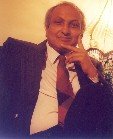How does the power of dialogue to snap us out of our set
ways of thinking or interpretation manifest itself?
Our set ways of thinking are progressed by typical patterns.
The dialogue concept suspends assumptions to enable
exploration of underlying thinking, provides a "container" in which
interactions take place, and uses proprioceptive attention to enable a
transformation in underlying patterns of thought.
To suspend assumptions means to recognize the
source of thought and reflect on the underlying automatic process that gave
rise to a particular conclusion. To correct or flx a problem (that could be a
paradox) is to take a stance that is separate from it, that objectifies it, and
that seeks to apply an analytic approach towards understanding it. While this
approach is the essence of science, it is also limiting, especially if this is
the only move one is able to make. A "dialogic stance" is one that
moves in the direction of suspending both the immediate effort to correct a
problem, and the very processes by which it becomes defined in a particular
way. Its value lies in the possibility of dissolving problems before they
appear by reframing experience.
To provide the container implies easing interactions
and surfacing options to solve system problems, reducing the risk of
participating, and legitimating inquiry into underlying images, norms and
perceptions. The purpose of the container is to enable participants to
see, in effect, the water in which they have been swimming, so that they may
influence it consciously.
To use proprioceptive attention is to
apply a kind of mindful self-reflection that slows down thinking and opens the
possibility for insight. It goes beyond reflection based in memory—in processing
images and information that occurred in the far or recent past. They are accepted
as literal and real. If we had the ability to connect them with the nature of
our thoughts we would be able to see self-destructive thoughts, for example,
and have some ability to control them. Typically we simply see our thoughts as
emerging "from nowhere" and do not detect our own fingerprints on
them.
















